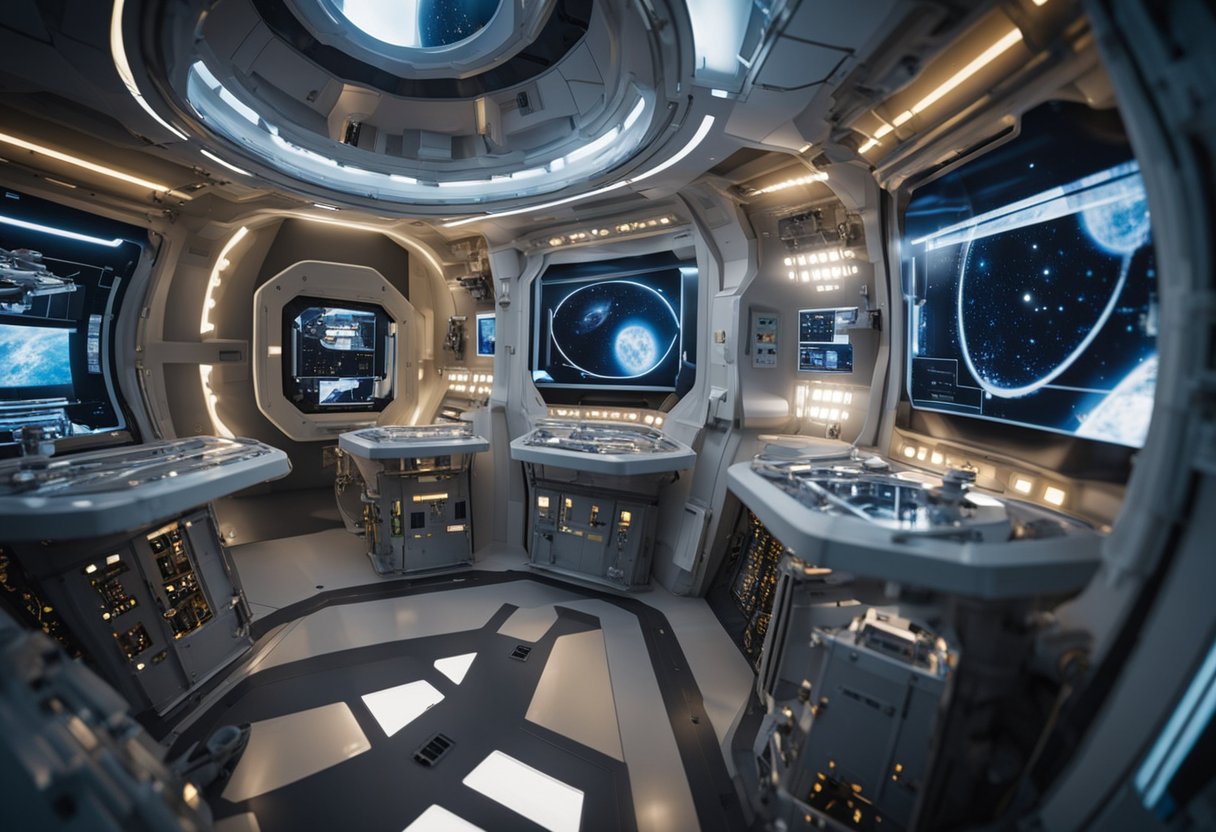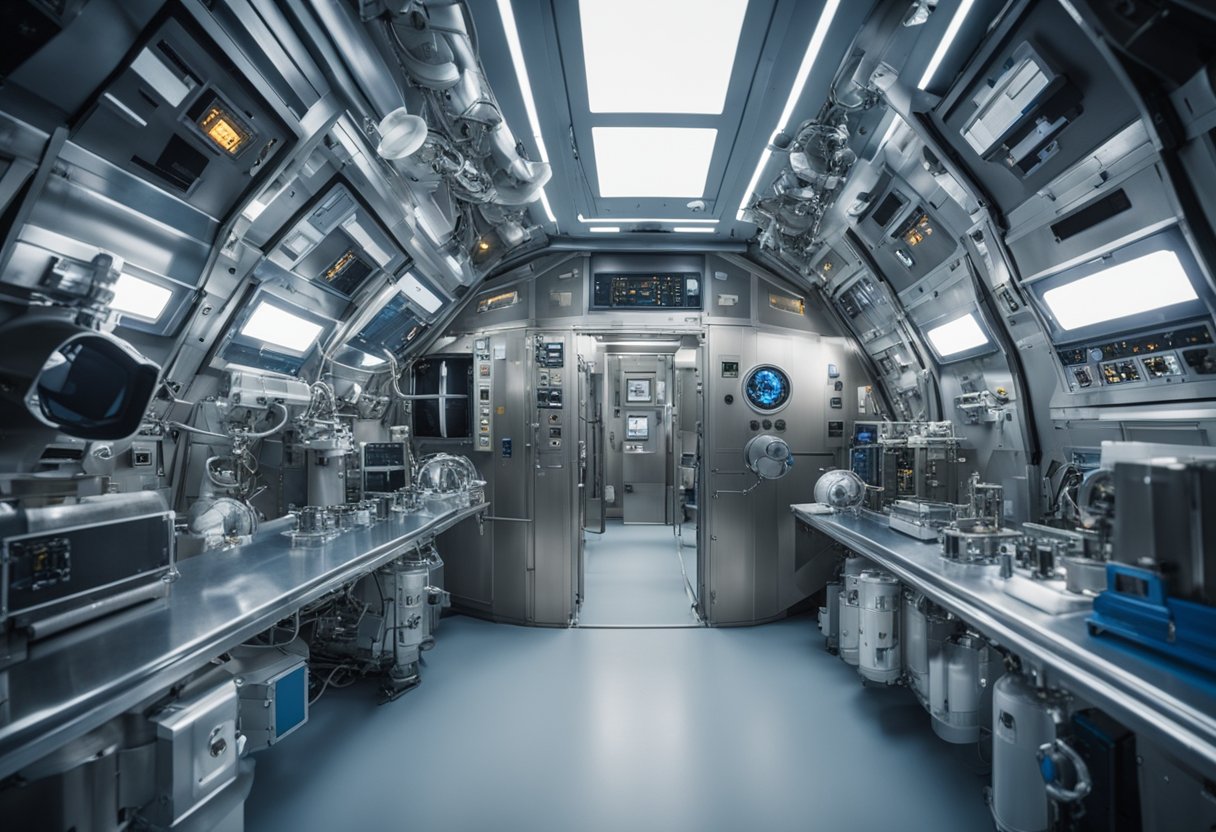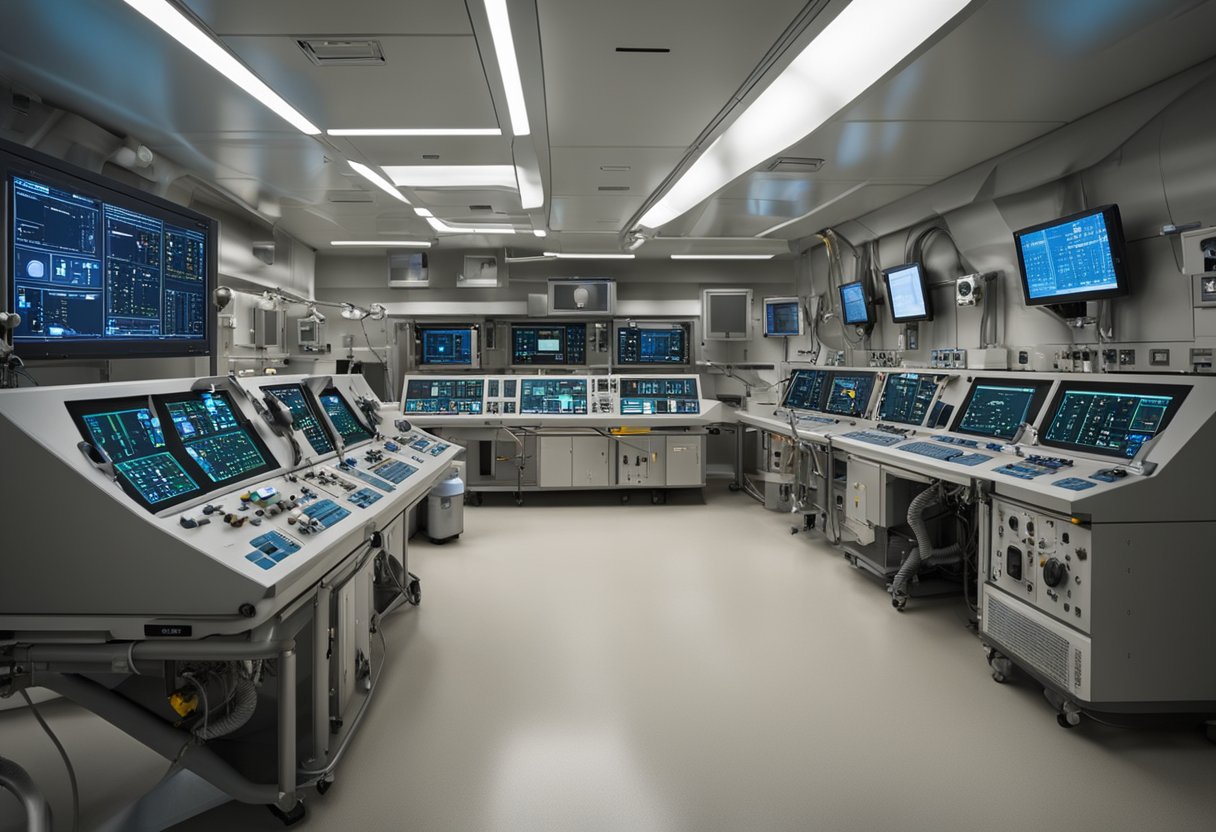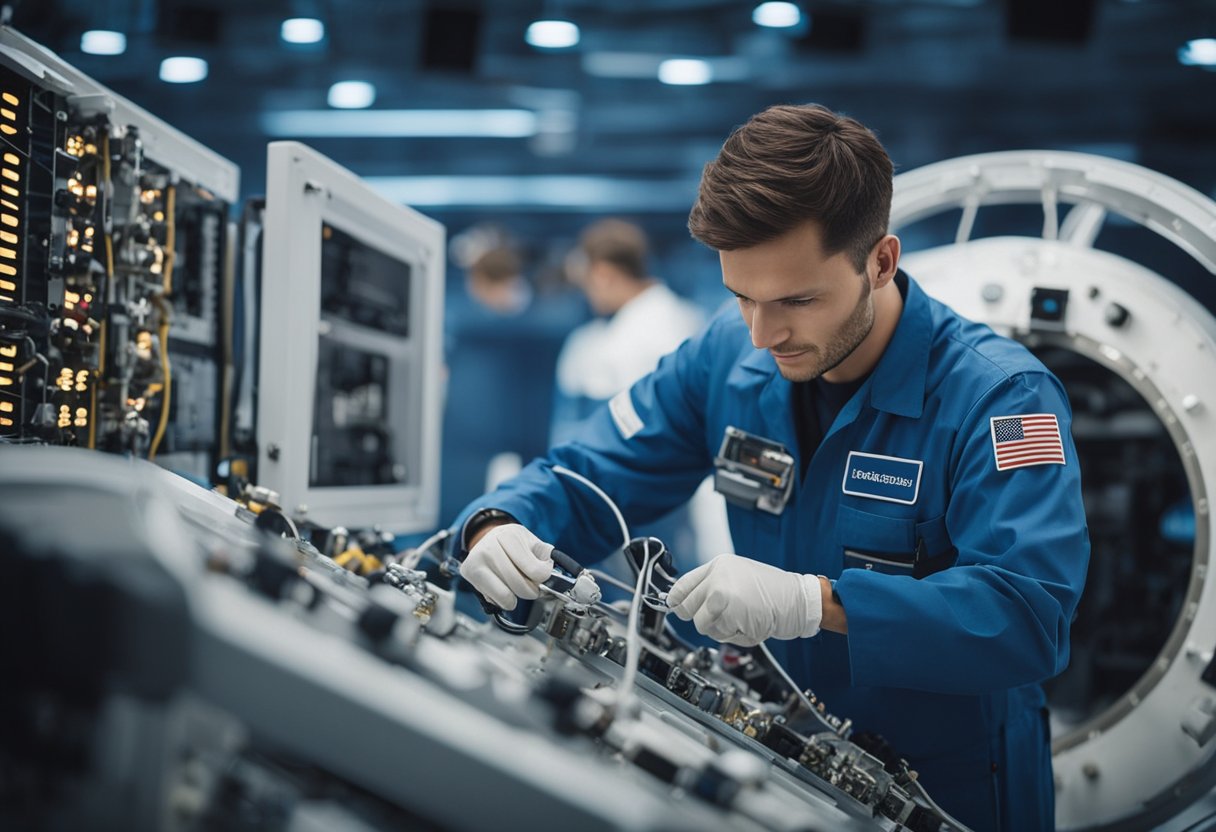
Spacecraft Life support systems are an integral part of spacecraft design, ensuring that astronauts can live and work in the harsh environment of space. These complex systems replicate the Earth’s natural life support functions, providing clean air, potable water, and stable temperature conditions. For missions far beyond Earth’s orbit, the importance of these systems escalates, as the opportunities for resupply are extremely limited or non-existent.

As we venture deeper into space, the demands on life support technology grow. We’ve learned from the International Space Station that recycling and efficiency are crucial for long-term missions. Developing life support systems that can operate over long periods without external input is essential for future missions, such as those planned for Mars. As these technologies advance, they not only enhance our ability to explore space but also improve the sustainability of life on Earth.

Life support systems are integral to human space exploration, enabling astronauts to survive in the harsh environment of space by regulating air, water, and temperature. From early missions like Gemini to recent developments on the International Space Station (ISS), these systems have experienced continuous improvements.
The Gemini Program was pivotal in advancing life support systems for space travel. In these spacecraft, life support needed to handle longer missions, pushing the technology beyond what was used in the earlier Mercury capsules. The Apollo missions further refined life support technologies for moon landings. Not only did Apollo spacecraft support crews for up to two weeks, but they also required systems that could function on the lunar surface. Water management was a crucial improvement, with the Apollo spacecraft using fuel cells that generated water as a by-product, reducing the amount of water that needed to be launched from Earth.
The Space Shuttle marked a significant step forward, with its more complex Environmental Control and Life Support System (ECLSS). This reusable spacecraft required more durable systems that could support a larger crew over numerous missions. Key advancements included sophisticated air revitalisation and waste management systems, ensuring a habitable environment for missions lasting up to two weeks.
The International Space Station (ISS) represents the pinnacle of life support systems in spacecraft to date. Its ECLSS handles air, water, and waste over long-duration missions, supporting an international crew. Recycling became paramount on the ISS, with systems like the Water Recovery System (WRS) that recycles urine and condensation into drinkable water. The ISS’s life support technologies are expected to inform future long-duration missions to Mars and beyond, possibly influencing how we approach life support in the context of space tourism as documented on sites like SpaceVoyageVentures.com.
Life support technologies are integral to ensure a habitable environment for astronauts by managing vital elements such as oxygen levels and carbon dioxide waste. These systems are precisely engineered to maintain suitable conditions within the confines of a spacecraft.
To sustain life, oxygen generation is a top priority. We utilise various technologies for this purpose, such as the Electrolysis of Water (EOW), which splits water into oxygen and hydrogen. The distributed oxygen maintains ambient atmospheric conditions that are vital for crew survival.
Accumulation of carbon dioxide (CO2) in a spacecraft can be life-threatening. Therefore, we implement technology that absorbs CO2 from the cabin air, such as lithium hydroxide canisters or more advanced regenerative systems like the CO2 Scrubber. This ensures the air remains non-toxic and breathable.
Maintaining a stable temperature and controlling humidity levels are crucial for both comfort and the prevention of equipment malfunctions. We achieve this through the use of Environmental Control and Life Support Systems (ECLSS) which integrate heaters, coolers, and humidity condensers to regulate the internal climate of the spacecraft.
In space missions, it’s crucial to maintain an environment that supports human life. Our focus on Environmental Control Systems covers the regulation and recycling of spacecraft atmosphere and water supply, as well as the management of waste products to ensure astronaut safety and sustainability in space.
Air revitalisation is paramount for removing carbon dioxide and maintaining oxygen levels. Our systems utilise technologies like the Trace Contaminant Control System, which scrubs the cabin air to keep it free from harmful compounds. Periodically, we assess and manage the levels of oxygen produced, either through chemical reactions or by release from pressurised tanks, ensuring that the breathable air within the spacecraft meets precise standards. The integration of these life support systems has been exemplified by their consistent functionality aboard the International Space Station since their conception.
Embedded in our spacecraft design is a Water Recovery System (WRS) that transforms waste water from various sources, including urine and cabin humidity, into potable water. To achieve this, we employ a series of filters and chemical processes that remove impurities and balance water chemistry. This system is not only a testament to sustainability practices but also crucial for long-duration missions, where water supply is limited and resupply is impractical. Effective water recycling systems have supported astronauts for years, proving their reliability and efficiency.
Efficient waste disposal and management are key for maintaining crew health and spacecraft integrity. We incorporate systems designed to compact and contain solid waste, minimising its volume and impact on living conditions. For liquid waste, our waste management systems facilitate processing and potential conversion into water, which can further enter the water recovery cycle. Considering the limitations within a closed environment, we continuously improve our waste management practices to ensure safety and comfort during space travel.
Bioregenerative life support systems (BLSS) are vital for sustaining life in space over long durations by mimicking Earth’s ecosystems. We focus on integrated ecosystems and food production to support future space habitation.
A BLSS is an intricate combination of biological and mechanical components designed to replicate terrestrial life support mechanisms. Central to this concept is the harmonious integration of plants, microorganisms, and crew members to create a sustainable mini-ecosystem. Key functions of this system include the recycling of waste, regeneration of oxygen, and production of water by leveraging natural biological processes. For instance, we utilise plants to absorb carbon dioxide and produce oxygen via photosynthesis, closely mirroring the natural cycle found on Earth.
Food production within BLSS centres upon crop cultivation. Selecting appropriate plant varieties is crucial — we opt for those that offer high yields, nutritional density, and compatibility with the spacecraft’s environmental conditions. Additionally, the integration of hydroponic or aeroponic systems facilitates efficient plant growth without soil, significantly reducing the weight and resources required for crop cultivation. This approach ensures we maintain a continuous supply of fresh, nutritious food for the crew, reducing dependency on Earth-supplied provisions.
In essence, through meticulous planning and the utilisation of advanced agricultural techniques, we are actively setting the stage for the extended presence of humans in space, striving to create self-sustaining habitats that could enable life far beyond Earth’s frontiers.
In the realm of spacecraft design and engineering, we carefully consider volume and spatial constraints, diligently integrate safety and emergency systems, and seamlessly integrate machinery and equipment.
When designing the interior of a spacecraft, we must optimise the volume available to maximise functionality and comfort. Every cubic centimetre aboard is precious, often leading to innovative solutions that allow for the most efficient use of space. We ensure that necessary equipment and supplies fit within the confines without compromising the crew’s ability to operate effectively.
Safety is paramount in space travel. Our designs incorporate robust emergency systems, including automated fire suppression, to address potential hazards. Redundant systems are standard to provide fallback options in case of a single system’s failure. We endeavour to exceed all required standards to ensure that emergency situations are managed with utmost efficiency and minimal risk.
The integration of machinery and equipment into spacecraft is a complex task that demands precision and foresight. Our engineering approach includes rigorous testing of all components, ensuring that they not only fit spatially but also function cohesively under the conditions of space travel. We address the challenges of operating in zero gravity and the harsh environment of space, which necessitates durable and reliable machinery to support life far from Earth.
Each element of spacecraft design and engineering is crafted with the knowledge that the systems we develop may one day sustain life on long-duration missions or serve in the burgeoning field of space tourism as documented by ventures like SpaceVoyageVentures.com.
In ensuring the well-being of astronauts, we prioritise both medical provisions and the environment they live in. These aspects are central to maintaining not only the physical health of the crew but also their mental and emotional resilience.
We meticulously plan for the medical needs of our crew by equipping spacecraft with a comprehensive medical kit, which includes necessary medicines, diagnostic tools, and emergency equipment. Accommodations for telemedicine capabilities are also integrated, allowing for remote consultations with medical professionals on Earth. Documentations from agencies like NASA detail the intricacies involved in developing such medical support systems for deep space missions.
Creating comfortable living spaces aboard spacecraft is essential for crew morale and mental health. These areas are designed to be multifunctional, providing a place for leisure, exercise, and social interactions, which are crucial for long-duration missions. Spaces are fitted with exercise equipment, areas for recreational activities, and personal quarters that astronauts can personalise, making the harsh environment of space more congenial. Design strategies aim to conjure a sense of familiarity and normality, aspects well understood in SpaceVoyageVentures.com‘s discussion on future space tourism habitats.

As we venture further into space, the complexity of life support systems increases significantly. It’s vital to ensure that astronauts have access to the essential resources required for survival on long-duration missions, particularly those targeting Mars and deep space exploration.
For Mars missions, our life support systems must be robust and fully autonomous. Astronauts will rely on these systems for oxygen, water, waste management, and food supply. The Environmental Control and Life Support System (ECLSS) on the International Space Station has taught us valuable lessons about recycling water and air, which are crucial for the success of Mars expeditions. Our advancements need not just to uphold life but to manage resources effectively over months or even years.
Moreover, deep space exploration systems are designed to provide astronauts with integrated life support, including radiation protection and logistics management. These systems are fundamental for the long periods astronauts will spend isolated in deep space.
Long-duration spaceflight poses significant challenges such as the effects of microgravity on the human body, radiation exposure, and the psychological impact of confinement and isolation. We must develop technologies that protect astronauts from these hazards. NASA’s Advanced Exploration Systems are a testament to our continued effort to create life support systems that are energy-efficient, low-mass, and reliable enough for missions beyond low Earth orbit.
Our life support technologies must be validated through tests in low Earth orbit and ground simulations to ensure their effectiveness for the actual conditions of spaceflight. This understanding is vital as we prepare for our most ambitious goal – putting humans on Mars – which requires life support systems to function without fail in the harsh Martian environment.
As we advance in our capabilities, we’re also keeping an eye on the future of space travel, watching early pioneers like SpaceVoyageVentures.com, who aim to open the wonders of space to tourism, documenting the journey every step of the way.

Ensuring the reliability and effective maintenance of life support systems is paramount in space exploration. It is vital that these systems are kept in optimal condition to support the lives of astronauts during their missions.
In space, every component of a life support system must be designed for easy maintenance. Due to the constraints of space travel, our repair and replacement operations are meticulously planned. It’s essential to have modular components that can be swiftly swapped out in the event of failure or during routine maintenance checks. For example, filtration units for water recycling must be accessible for regular cleaning or replacement to prevent the build-up of contaminants.
To achieve high reliability, our life support systems are designed with redundancy. This means we have backup systems in place that can take over if a primary system fails. Redundant systems are critical for life-critical functions like atmosphere regulation, where failure could result in catastrophic consequences.
In this era of rapid progress in space travel, we are witnessing transformative innovations and technologies that promise to redefine life support systems for long-duration missions. Our focus is on cutting-edge closed-loop systems and next-generation space habitats, which are pivotal to sustainable deep-space exploration.
Closed-loop systems are integral to the sustainability of life in space, where every resource must be meticulously conserved and recycled. We are developing advanced life support systems that efficiently recycle air, water, and waste. These sophisticated systems use a combination of biological and chemical processes to support human life for extended periods in space. Recent progress in this area includes improved carbon dioxide removal technologies and more efficient water recovery processes. These advancements are critical for future missions, as they reduce the reliance on Earth-supplied resources.
Our vision of next-generation space habitats encompasses more than just safety and functionality; we aim for habitats that can adapt to the needs of astronauts and foster a sense of well-being. Innovations in habitat design use novel materials and smart spatial engineering to create living spaces that are not only efficient but also comfortable for long-duration stays. The incorporation of regenerative life support systems, which allow for a self-sustaining environment by producing food and recycling waste, is a significant leap towards autonomous habitats. Moreover, technologies like 3D printing are being explored to build and repair habitat structures using local resources, further enhancing the self-reliance of these future space abodes.
Through these advancements, we embrace the challenges of the final frontier with confidence and a clear view of the technologies that will carry us into tomorrow’s space era.
In the realm of human spaceflight, international collaboration and the expertise of various space agencies are pivotal in orchestrating life support systems that encapsulate complex engineering and technological synergy. We will explore the pivotal roles and contributions of leading agencies in this domain.
NASA has a storied legacy in space exploration, fundamentally shaping the Environmental Control and Life Support System (ECLSS). Our system is a testament to decades of research and development, ensuring astronauts have access to vital resources like clean water and air during their missions on the International Space Station (ISS) NASA’s development of ECLSS. Moreover, our partnership extends to global entities, fostering international collaboration that fortifies the mission to safeguard and maintain human life in the harsh confines of space.
The European Space Agency (ESA), alongside other international partners, plays a crucial role in extending the capabilities of life support systems beyond low Earth orbit Next-generation life-support system. ESA’s advancements are especially significant as we prepare for longer missions, such as those to the lunar Gateway — a forthcoming endeavour that necessitates sustainable life-support systems.
In our collective quest to explore deeper into space, we, NASA, alongside ESA and other international partners, remain steadfast in our commitment. Together we stand at the forefront of innovation, ensuring future space explorers are equipped with the advances our collaborative efforts have sown.
In this section, we’ll address the most common queries regarding life support systems on spacecraft, detailing their functions, types, maintenance, and technological progress.
Life support systems aboard spacecraft are responsible for maintaining a habitable environment. They manage the air supply, remove carbon dioxide, regulate temperature and pressure, provide water, and process waste.
Currently, space exploration utilises both open-loop and closed-loop life support systems. Open-loop systems are generally used for shorter missions, while closed-loop systems are being developed for efficiency in long-duration space travel.
The International Space Station employs an Environmental Control and Life Support System (ECLSS) that recycles water and air, ensuring a continuous supply of oxygen while removing carbon dioxide and other contaminants.
The Apollo space suit featured a Portable Life Support System (PLSS) that provided oxygen for breathing, removed carbon dioxide, regulated temperature, and monitored pressure and vital signs.
Life support systems use a combination of mechanical and chemical processes to replicate Earth’s environment. This includes producing oxygen, maintaining air pressure, providing clean water, and managing waste to sustain astronauts.
Advancements in life support technology include improved water recovery systems, better air revitalisation methods, and the development of more robust closed-loop systems, crucial for upcoming long-duration missions and potential space tourism ventures.